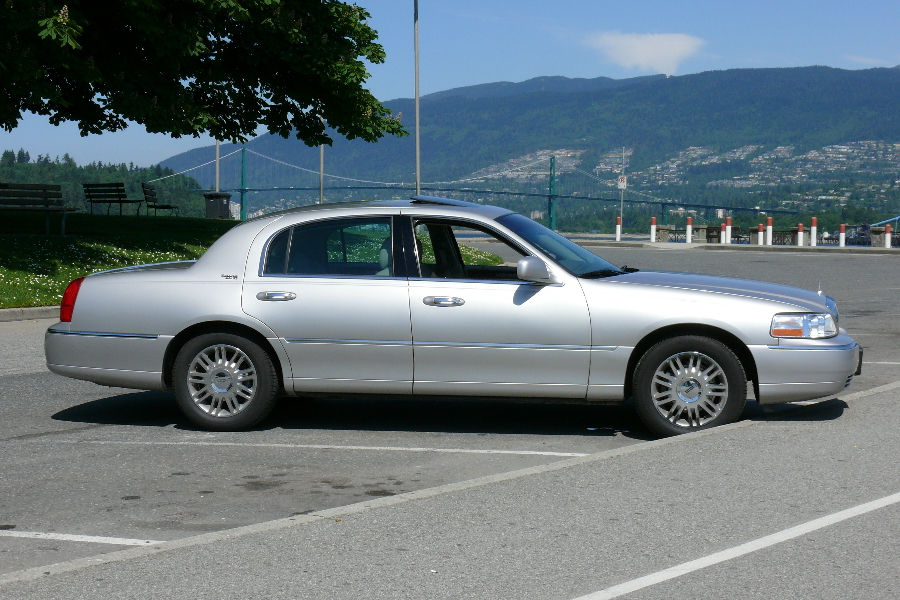Chapter 2. Transportation
2.4 Land
While much of this text has placed significance on the emergence of the railways as critical to the development of our industry, BC’s roadways have also played an integral role. Our roads have evolved from First Nations trails, to Fur Trade and Gold Rush routes, to Wagon Roads and Trunk Roads — finally becoming the highway system we know today (British Columbia Ministry of Transportation and Highways, n.d.).
Take a Closer Look: Frontier to Freeway: A Short Illustrated History of the Roads in British Columbia
This short book, available as a PDF, provides an overview of the integral importance of BC’s evolving roadways in our transportation sector. Read here: Frontier to Freeway: A Short Illustrated History of the Roads in British Columbia [PDF].
Today, land-based travel is achieved through a complex web of local transit, taxis, rentals, walking, and short-term sightseeing. This section briefly explores these options.
Scenic and Sightseeing Travel
It’s common for visitors to want to explore a community and appreciate the sights. We’ve already learned a little about the rail-based sightseeing company, Rocky Mountaineer. Many destinations also offer short-term, hop-on-hop-off bus and trolley tours. Others feature trams and trolleys. Outside of impromptu excursions, sightseeing tours are often put together by inbound tour operators. You can learn more about tour operators, and the sightseeing sector, in Chapter 7.
Transit and Destination Infrastructure
Vancouver’s Tourism Master Plan acknowledges the importance of transportation infrastructure for the tourism industry. Priorities for future development by the city include (Tourism Vancouver, 2013):
- Improving accessibility for people with disabilities
- Creating a transit loop between downtown attractions
- Supporting ferries in False Creek
- Providing late-night transit
- Investigating and implementing a public bike share
- Developing more transit options along the Broadway corridor
- Working with taxi companies to explore a strategic plan for taxi operations
- Enhancing walkability by implementing recommendations from the Pedestrian Safety Study and Action Plan
These action items were developed in consultation with industry stakeholders as well as residents, and reflect the interrelated elements that make up a destination’s transportation infrastructure.
Rentals and Taxis

Today, when travellers aren’t using their own cars, automobile travel is traditionally split between rental vehicles, taxis (including limousines), or ride sharing.
Rentals
In North America, there are three main brands that represent approximately 85% of the rental car business: Enterprise (includes National and Alamo), Hertz (includes Dollar and Thrifty), and Avis. One of the reasons that brands have consolidated over time is the high fixed cost of operation as vehicles are purchased, maintained, and disposed of. Fierce competition means prices are checked and updated thousands of times a day. The business is also highly seasonal, with high traffic in summer and spring, and so fleet management is critical for profitability. Rental companies tend to use enplanements (the numbers of passengers travelling by air), as a measurement of market trends that influence rental usage (DBRS, 2010).
Taxis
In BC, taxi licences are issued by the BC Passenger Transportation Board. In Vancouver, the right to operate a taxi is based on a permit system, and each permit costs the original holder $100. But because of the limited number of permits available, those who hold one are able to auction it off for over $800,000 and keep the profit. As a result, passengers in Vancouver paid an average of 73% more for the equivalent trip in Washington, D.C. Drivers from areas outside the city depositing passengers in Vancouver are also not permitted to pick up fares on the return trip, having to drive across their boundaries (Proctor, 2014).
Ridesharing appslike Uber, which allow people to find a ride using their mobile phone, have emerged to exert influence on car travel in key destinations. In most major cities where ridesharing is available, these apps have rapidly undercut the taxi industry. In SanFransico for example, according to the city’s transit authority, per month, trips by taxi have plummeted from 1,424 in 2012 to 504 in 2014, even though taxi operators maintain a monopoly over rides from the airport (Kuittinen, 2014). In New York City, however, the price of medallions (similar to Vancouver’s taxi permits) continues to hover above $950,000. In large markets like Manhattan, passengers continue to hail cabs on the street at the moment, with e-hails (electronic taxi hails) at 0.17% of the market (Brustein & Winter, 2014). The City of Vancouver opted to force Uber to roll back after its initial release, and in 2014 placed the app on a six-month moratorium after pressure from taxi operators who cited threats to the values of their licences as well as safety and monitoring concerns (CTV News, 2014b). However, in January 2020, Uber and Lyft ride-hailing was launched in Vancouver. The Passenger Transportation Board announced on Jan. 23, 2020 that it had approved Uber’s application to operate in the Lower Mainland and Whistler, as soon as the company secures the appropriate insurance. Ride-hailing began in Vancouver shortly thereafter (Vancouver Sun, January 23, 2020). As well, the Passenger Transportation Board announced in early February 2020, that it had approved Kabu’s application to operate in the Lower Mainland, Whistler and the Greater Victoria area, as soon as the company secures the appropriate insurance. Kabu is based out of Richmond, B.C. and had been operating across the Greater Vancouver area since 2016 but paused operations in September 2019 when the company submitted its PTB application.
Uber is available in hundreds of cities internationally so you may already be familiar with the app, or may even already have it downloaded to your phone. Uber offers a variety of vehicles, with UberX being the most affordable, standard sedan option all the way up to Select which includes more stylish rides. As this and other examples illustrate, the transportation sector is vulnerable to regulatory, technological, operational, and business trends. Let’s look at these in more detail.
Applications for mobile devices that allow users to share rides with strangers, undercutting the taxi industry.

